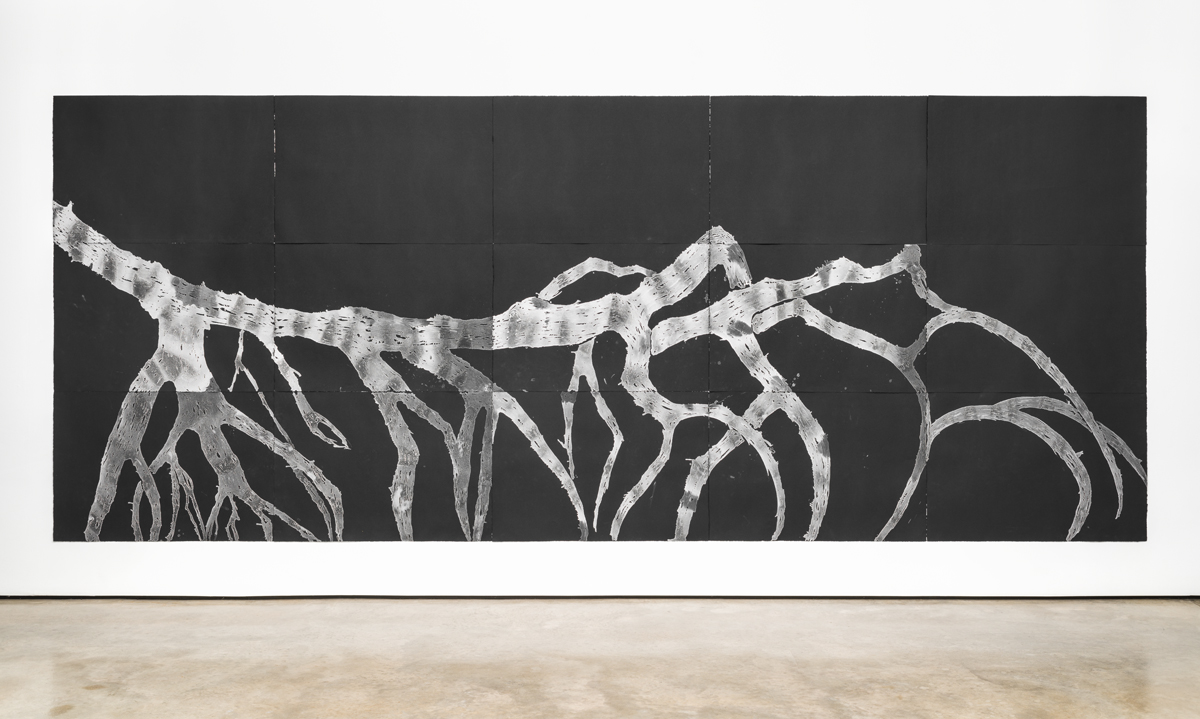
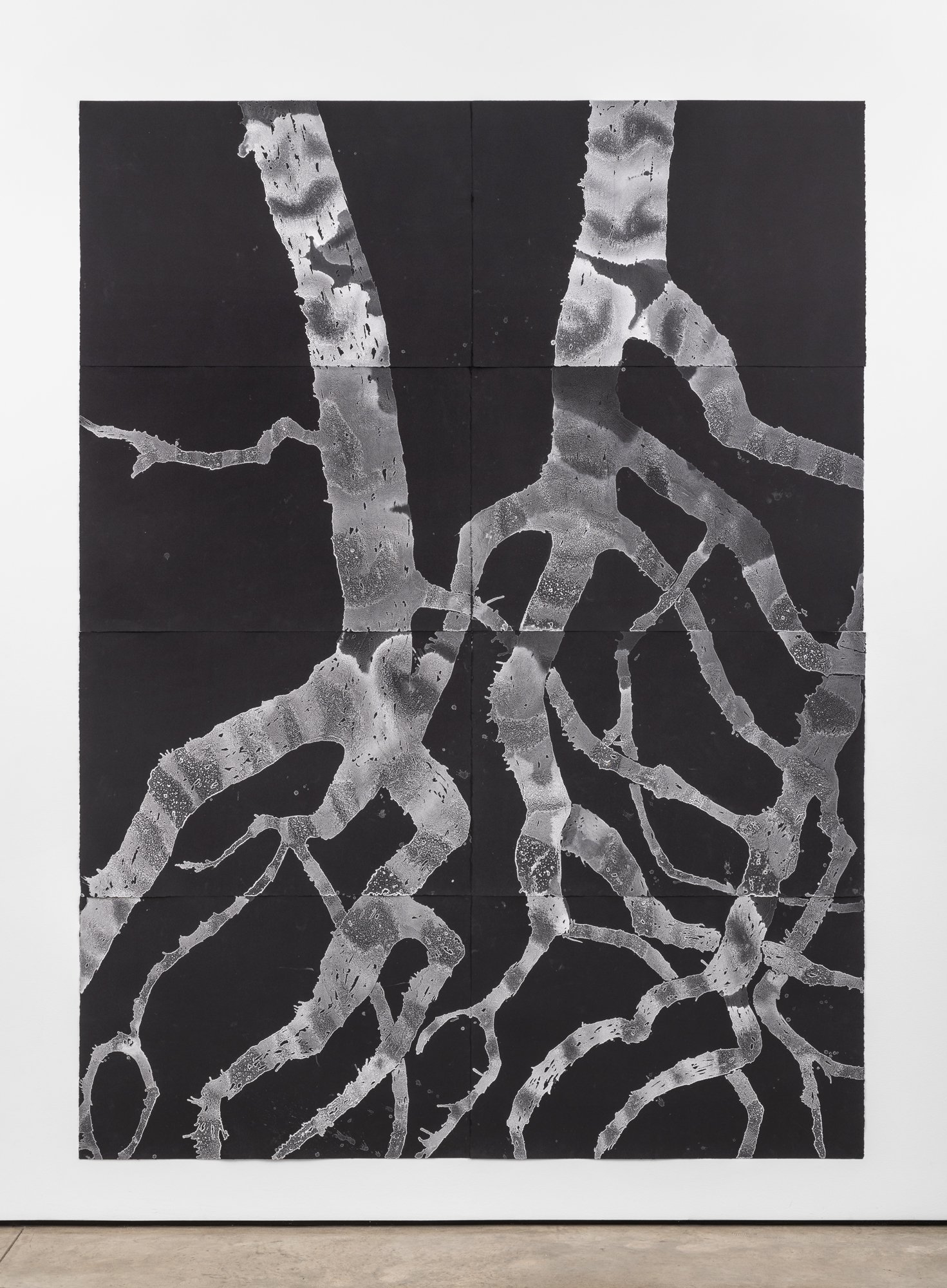
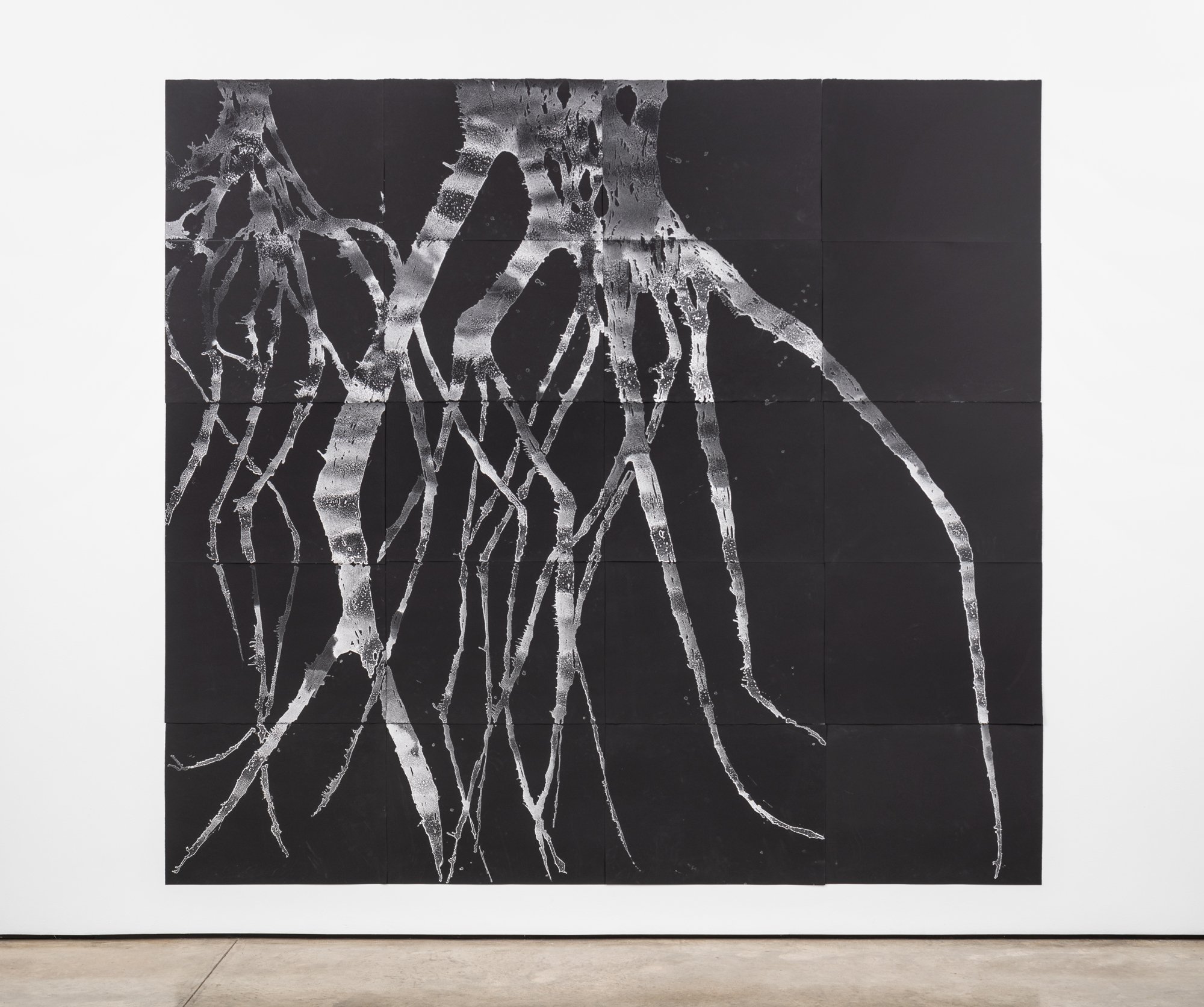
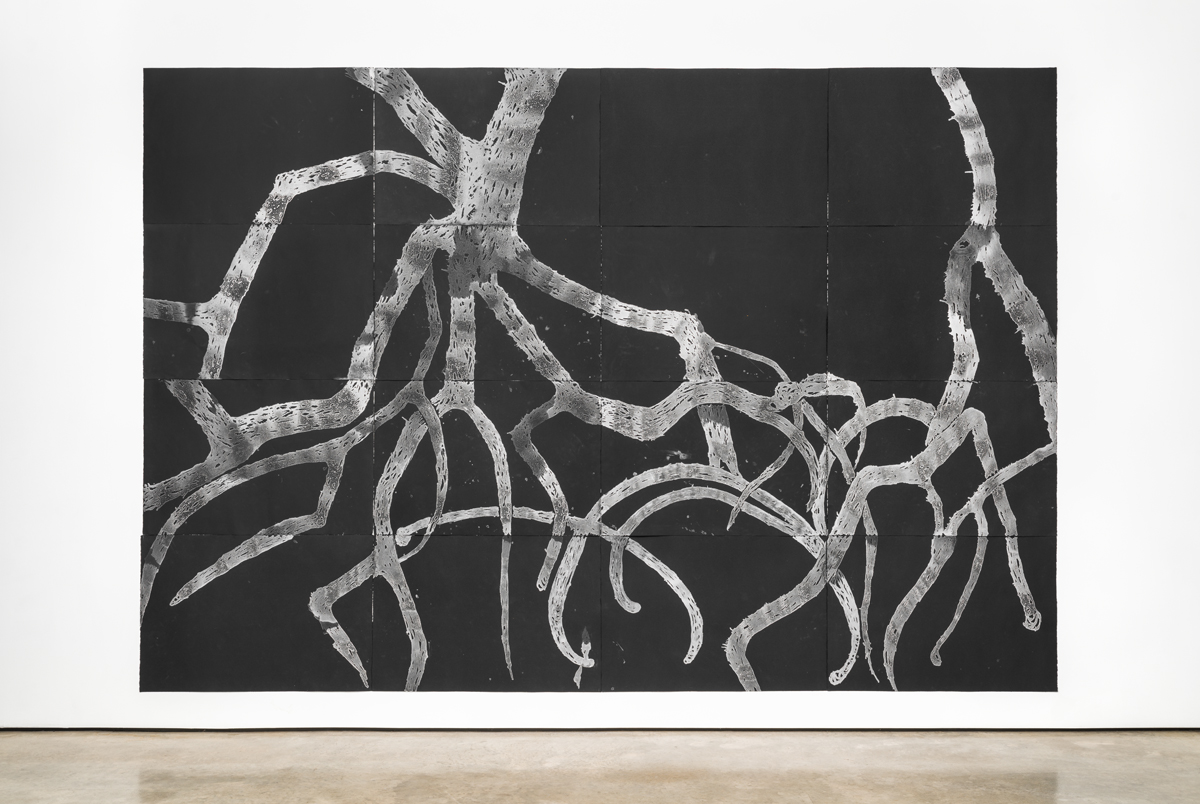

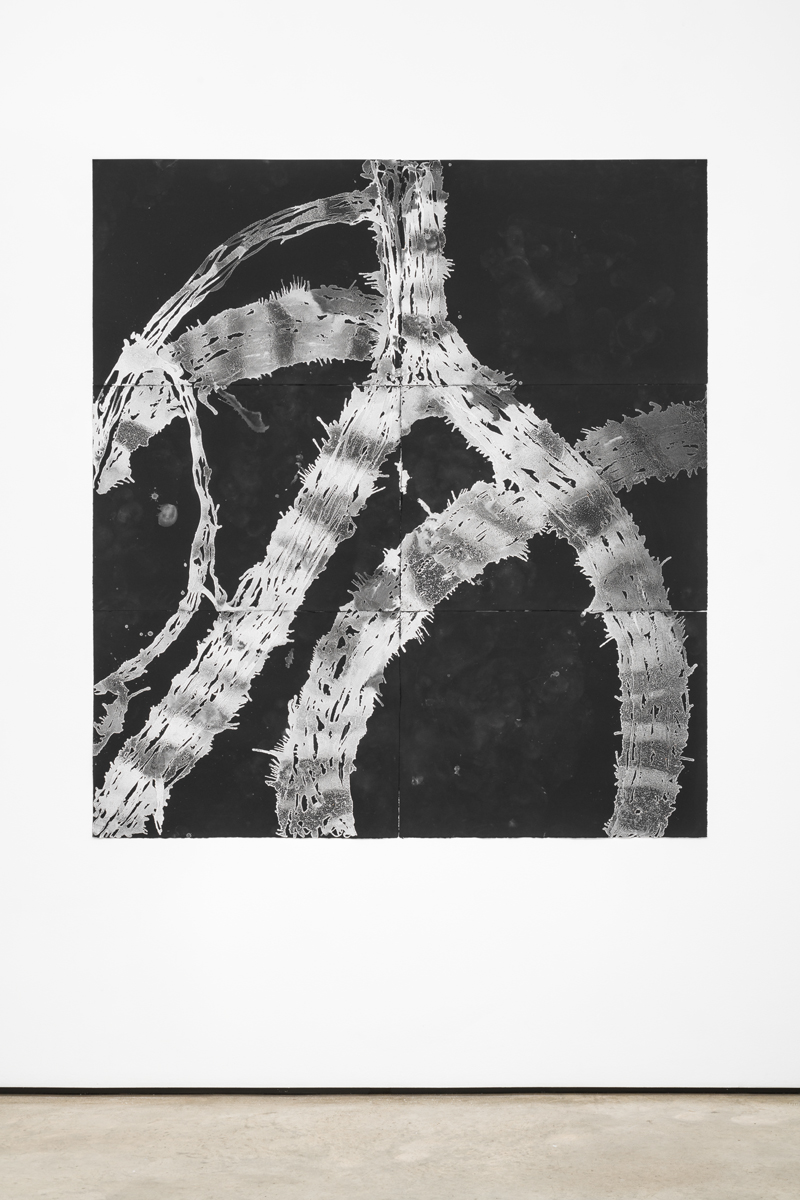
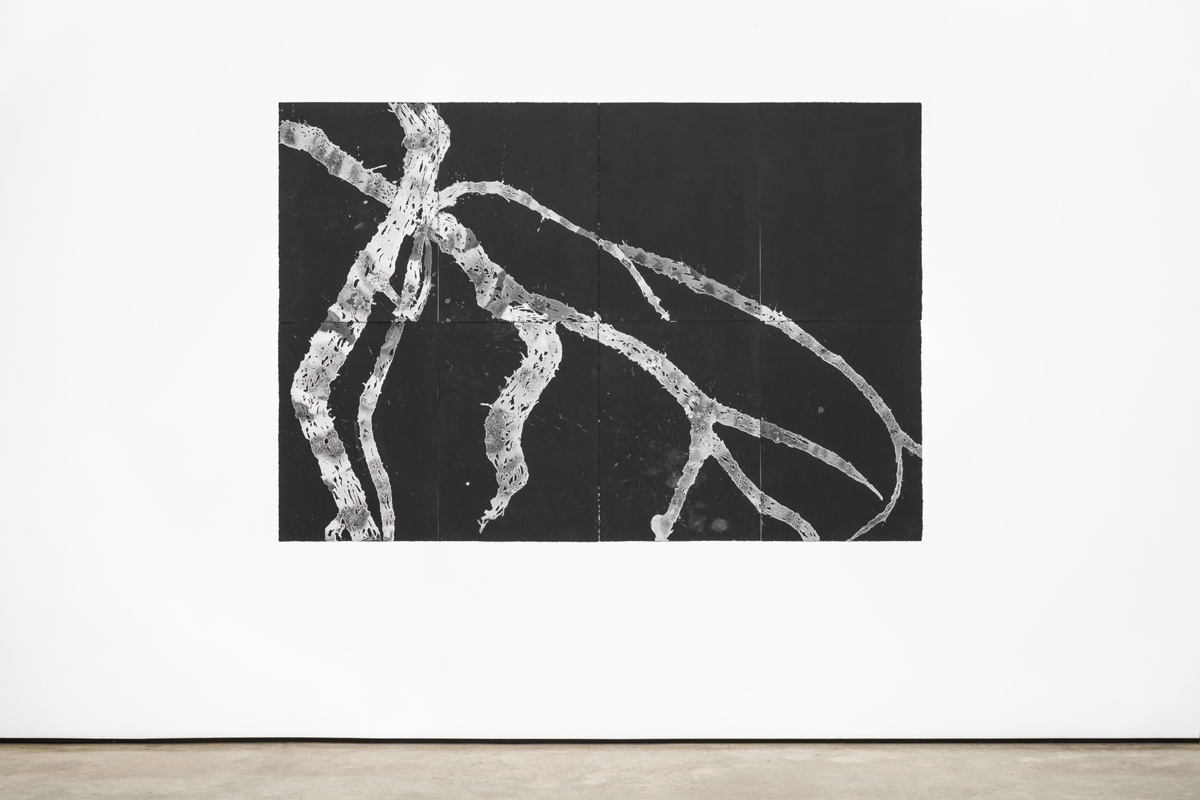

Sea salt crystals on archival paper
7’6” H x 18’ W
2018
These images may seem to have nothing to do with the ocean, yet mangrove roots live underwater for (usually) two tides a day. A primeval tree, mangroves are extremely adaptable. The soil they live in is low on oxygen, hence their tangled and prolific root structures not only serve as buttresses for the trees, but they breathe in oxygen for the trees when the tides are out. While the tides are in, and the roots are underwater, they provide a sheltered and bountiful ecosystem for marine life.
Along with coral reefs and giant kelp forests, mangrove forests are one of three buffer zones for the ocean. In addition to serving as ecosystems for a diverse population of undersea life, buffer zones also temper the force of the ocean on shore lands.
I was drawn to the mangrove forests strange aura: they are not ‘beautiful’ as humans seem to prize beauty. They are not welcoming to human beings: as home to tigers and a variety of snakes, they are dangerous places. Mangrove forests have been cut back to develop residences with ocean views. Yet other cultures use them to ward off erosion and damage from tsunamis, harvest honey, and fish. They absorb 10 times the carbon of terrestrial trees, and anecdotal evidence shows they may help balance ocean acidity in their range.
In 2018, mangrove forests seem hopefully stable, while coral reefs and giant kelp forests are dying off or being hit hard with climate change. (Two years ago, the news was only about coral reefs. Now kelp forests are endangered.) I was unaware of what climate change really has in store for life on land, until the ocean started to open my eyes.